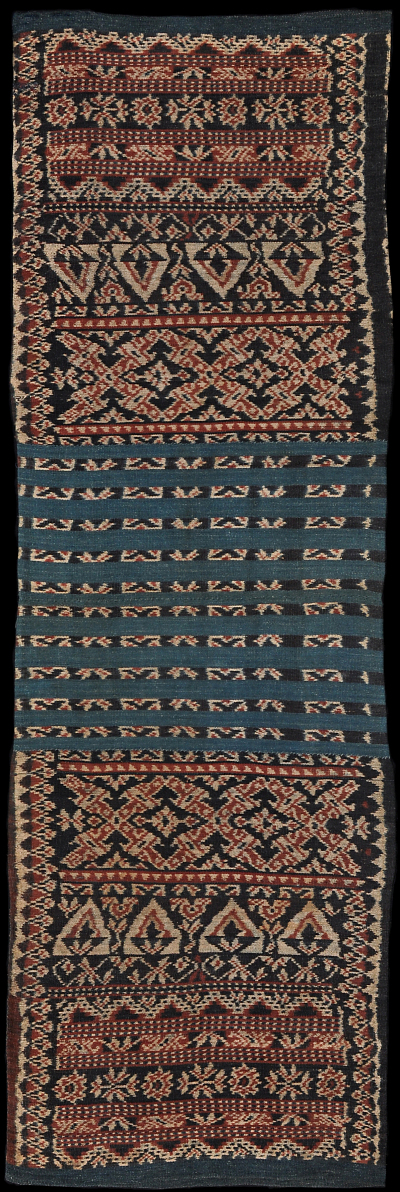| |
014 Roti Group, Roti
Pou (sarong)  
|
| Locale: | Probably eastern part of the island. |
| Period: | 1900-1925 |
| Yarn: | Cotton, hand-spun, coarse |
| Technique: | Warp ikat |
| Panels: | 4 |
| Size: | 50 x 158 cm (1' 7" x 5' 2") LW: 3.16 |
| Design: | Pou (tube skirt) dula bunga. The top and bottom sections are decorated with traditional Roti motifs, including patola-like jilamprang), and brick red bands; the unusual mid section with indigo bands alternated with narrow ikat bands. The number of bands in the mid section is the same as that on old-style Tanimbarese makan maran/tais marin. This may be a meaningless coincidence, but influence either way is not unthinkable. Traces of yellow indicate manufacture in a royal family. |
| Comment: | Old piece acquired on Adonara in 1981. Fellow-collector Darrell McKnight, familiar with the area, suggest that it was probably made in one of the eastern rajadoms on account of its stark blues, which are typical for this part of the island, where morinda red is harder to find. According to the same source, the end fields as well are a mark of royalty. |
| Background: | Chapters on Roti Group and Roti. |
| Exhibited: | Museu do Oriente, Lisbon, 2014/15. |
| Published: | Woven Languages, 2014.
Ikat Textiles of the Indonesian Archipelago, 2018 |
| Compare: | 127 180 |
| Sources: | Very similar to pou in Yoshimoto, Ikat, Fig. 170. Motif similar to that of Roti sarong in Boston Museum of Fine Arts, No. 30.828, though with different coloration, the blue here being lighter and stronger. Also similar to sarong in National Gallery of Australia, No. NGA 1983.3694, though ours has a more elaborate centre field, and is several decades older. |
| |

©Peter ten Hoopen, 2025
All rights reserved.
|


